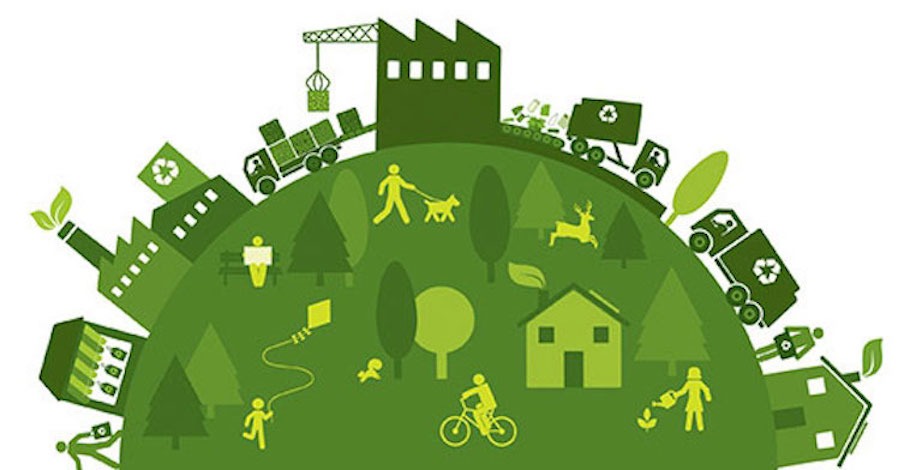What is green plan ?
A green plan, also known as an environmental or sustainability plan, is a comprehensive strategy or roadmap that outlines specific actions and goals for achieving environmental sustainability. It is typically developed by governments, organizations, or communities to address environmental challenges and promote sustainable development.
Here are some key elements commonly included in a green plan:
- Environmental Goals and Objectives: A green plan starts by defining the overarching environmental goals and objectives to be achieved. These can include targets related to reducing greenhouse gas emissions, improving air and water quality, conserving natural resources, promoting biodiversity, and addressing climate change.
- Policy and Regulatory Framework: A green plan establishes the policy and regulatory framework necessary to support sustainability initiatives. It may involve the development of new laws, regulations, or incentives that encourage environmentally friendly practices and discourage harmful activities.
- Energy and Resource Management: Green plans typically focus on energy efficiency and the transition to renewable energy sources. They may include strategies for reducing energy consumption, promoting energy-efficient technologies, and increasing the share of renewable energy in the overall energy mix. Resource management may involve measures to conserve water, promote recycling and waste reduction, and encourage sustainable land use practices.
- Transportation and Mobility: Green plans often address sustainable transportation and mobility. This can include promoting public transportation, cycling, and walking, as well as supporting the adoption of electric vehicles and alternative fuel infrastructure. The goal is to reduce carbon emissions and improve air quality.
- Green Infrastructure: Green plans may emphasize the development of green infrastructure, such as parks, green spaces, and urban forests, to enhance biodiversity, mitigate climate change impacts, and improve the quality of life for communities. This can also include the promotion of sustainable building practices and the use of green technologies.
- Economic and Social Considerations: Green plans recognize the interconnectedness of environmental, economic, and social aspects. They often include strategies for promoting green jobs, fostering sustainable economic growth, and ensuring social equity and inclusion in sustainability efforts.
- Monitoring and Evaluation: A green plan incorporates monitoring and evaluation mechanisms to track progress towards sustainability goals. This involves establishing key performance indicators (KPIs) and regularly assessing the effectiveness of implemented actions. It allows for adjustments and improvements to be made as needed.
- Stakeholder Engagement and Collaboration: Successful green plans involve engaging stakeholders from various sectors, including government agencies, businesses, civil society organizations, and local communities. Collaboration and participation help build consensus, gain support, and ensure a broad-based approach to sustainability.
Green plans vary in scope and scale, depending on the entity developing them. They can be at the national, regional, or local level, and can be tailored to address specific environmental challenges and priorities. The ultimate aim of a green plan is to guide actions towards a more sustainable future, balancing environmental protection, economic development, and social well-being.
Green plan design
Green plan education refers to educational initiatives and programs that aim to raise awareness, provide knowledge, and foster understanding of environmental sustainability and green practices. It involves integrating sustainability concepts and principles into educational curricula at various levels, from primary schools to higher education institutions.
Here are some key aspects and objectives of green plan education:
- Environmental Literacy: Green plan education seeks to develop environmental literacy among students and the wider community. It aims to equip individuals with the knowledge and understanding of environmental issues, sustainability concepts, and the interconnections between human activities and the environment.
- Sustainable Development: Green plan education emphasizes the principles of sustainable development, which involves meeting present needs without compromising the ability of future generations to meet their own needs. It promotes a holistic approach to addressing environmental, economic, and social challenges.
- Curriculum Integration: Green plan education encourages the integration of sustainability topics into the curriculum across different subjects and disciplines. This can include incorporating environmental science, ecological principles, climate change, renewable energy, waste management, sustainable agriculture, and other relevant topics into lessons.
- Experiential Learning: Green plan education often emphasizes experiential learning approaches, such as field trips, outdoor activities, and hands-on projects. These interactive experiences provide students with opportunities to observe, explore, and engage with the natural environment, fostering a deeper connection and understanding of sustainability concepts.
- Environmental Stewardship: Green plan education promotes a sense of environmental stewardship and personal responsibility for taking care of the planet. It encourages students to become active participants in creating positive environmental change through actions such as waste reduction, energy conservation, recycling, and advocating for sustainable practices.
- Critical Thinking and Problem Solving: Green plan education emphasizes critical thinking and problem-solving skills in the context of sustainability. It encourages students to analyze complex environmental issues, evaluate potential solutions, and make informed decisions considering multiple perspectives.
- Collaboration and Partnerships: Green plan education often involves collaboration among educational institutions, government agencies, community organizations, and environmental NGOs. Partnerships can enhance the effectiveness of educational initiatives by sharing resources, expertise, and best practices.
- Green Campus Initiatives: In higher education settings, green plan education extends beyond the curriculum to include green campus initiatives. Universities and colleges can implement sustainability practices on campus, such as energy-efficient buildings, recycling programs, sustainable transportation options, and student-led sustainability clubs.
- Professional Development: Green plan education recognizes the importance of professional development for educators. Training programs and workshops can provide teachers with the knowledge and skills needed to incorporate sustainability into their teaching practices effectively.
- Community Engagement: Green plan education aims to engage the wider community, raising awareness and fostering a collective commitment to sustainability. This can involve organizing environmental campaigns, community clean-up events, public lectures, and workshops that involve local stakeholders.






